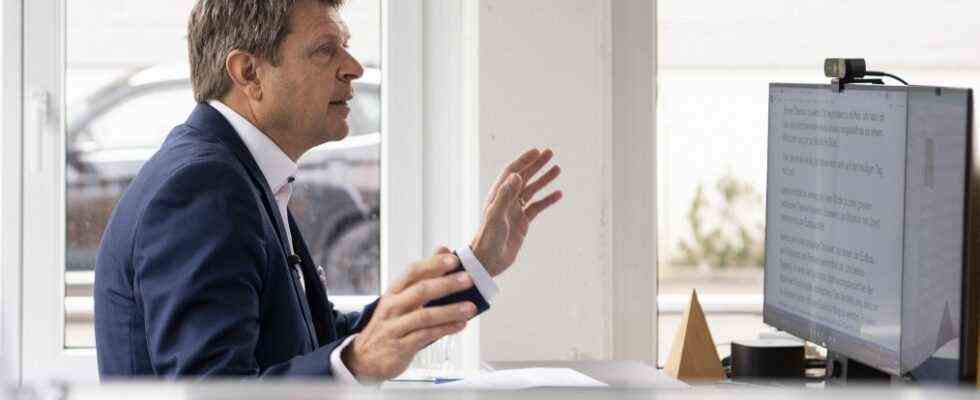They exist, the bridges between the FDP and the Greens in Germany – at least that’s how their party leaders see it. You announced on Friday that you wanted to enter into coalition negotiations with the SPD. On Sunday the Greens agreed at a small party congress, and on this Monday the top bodies of the FDP also said yes. So it looks good for a so-called citrus coalition – and although yellow and green are considered to be miles apart, their differences are difficult to overcome.
One of Germany’s neighboring countries shows that it doesn’t have to be that way. In Switzerland, this supposedly contradicting mixture has long existed: in the form of the green liberal party, which emerged in 2004 from a split from the Zurich Greens. The green liberals have now become an established political force that has become an integral part of Swiss federal politics and most of the cantons. In the most recent federal elections in 2019, they won almost eight percent of the vote, and in the referendums they are rarely among the losers with their positions, so they hit a nerve in the population. What can German Greens and Liberals learn from them?
First and foremost: Liberal and green positions certainly overlap. Showing that was the central motive of the green liberals from the very beginning, and they made it. Back then, in 2004, the left wing had prevailed at the head of the Zurich Greens, i.e. people who want more government, demand stricter rules for the economy and are close to trade unions. The defeated Realo wing around the federal parliamentarian Martin Bäumle then founded the new party, which wanted to combine ecological with liberal action. So: on the issues of environmental protection, society and foreign policy in line with the Greens, but much more economically liberal and more restrictive in the areas of migration and the welfare state.
Liberal positions are part of the basic political system in this small country
Translated into concrete policy, this means: The green liberals want to move away from fossil fuels and nuclear power, but not through bans, but through financial incentives such as steering taxes, bonus-malus systems and tax reform. They want a state that is as lean as possible, one that does not spend more than it earns and that does not tax companies and entrepreneurs too heavily. While the Swiss Greens and the Social Democrats approve of almost every attempt to tax high earners and the rich more in order to finance pensions, health costs and social systems, the Green Liberals are cautious when it comes to tax increases or new government spending.
It is also no coincidence that the mixture of green and liberal came to the party in Switzerland of all places. In contrast to Germany, liberal positions are practically part of the basic political equipment in this small country: no political tendency was as important for the development of modern Switzerland as liberalism. The resulting Swiss FDP has long ceased to be the strongest force, but there are certain basic liberal convictions among the population that cannot be ignored in this country.
New, important voice from the center
When the Greens in some cantons came closer and closer to the far-left Swiss Social Democrats, it was enough for the more pragmatic party members. They wanted a liberal alternative to the left eco party, and even if their current approval ratings only make them the sixth strongest force, the green liberals can now be described as the new, important voice of the center. They often play an important role in parliamentary votes: because, depending on the topic, they join the left and sometimes the right camp.
Example pension reform: Here, the green liberals successfully made common cause with the bourgeoisie, who want to plug the pension gap by aligning the retirement age for women and men (Swiss women are currently allowed to retire at 64, Swiss only at 65).
Example CO₂ law: Switzerland was supposed to implement the Paris Climate Agreement, and of course the green liberals, along with the Greens, were among the driving forces behind the draft, which did not want to prohibit climate-damaging behavior but rather make it more expensive – above all through taxes on fossil fuels and flight tickets. Parliament passed the law with a large majority – but now has to work out a new bill because the population overturned the law in a referendum.
Or, like last time, that Example marriage for everyone: The new law, which also opens marriage to same-sex couples, goes back to a green-liberal initiative in 2013. After parliament, at the end of September, the people also clearly said yes to the reform. The Green Liberals spoke of a “milestone” in their recent history.
So it can work, this “environmental, social and economic sustainability triangle” proclaimed by the party. For the traffic light coalition in Berlin, which may soon be in office, it is definitely worth taking a look across the southern border.

